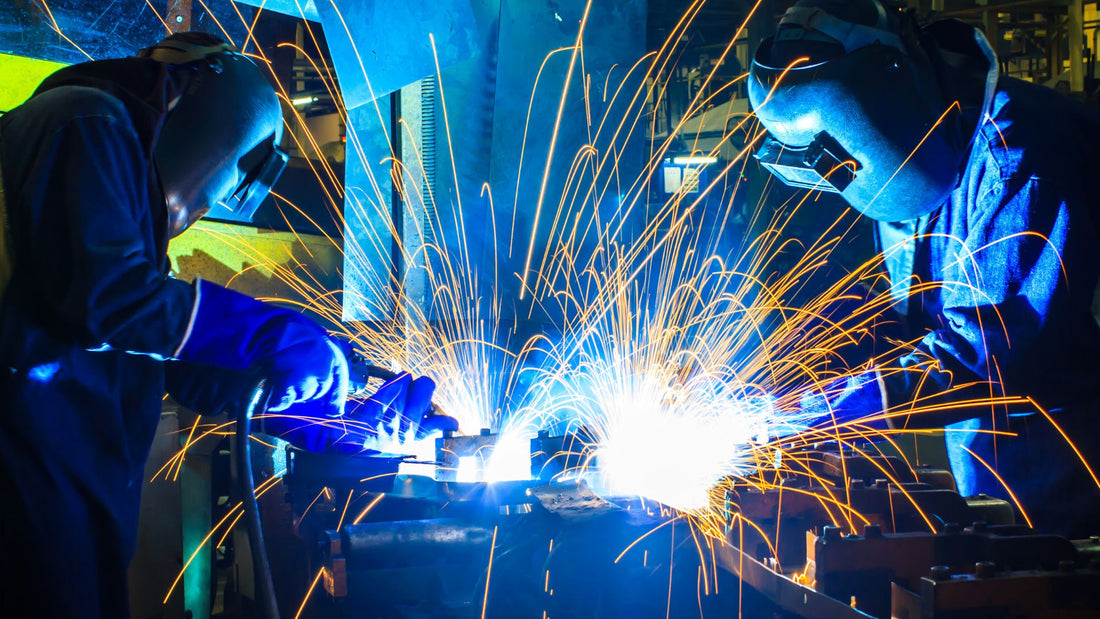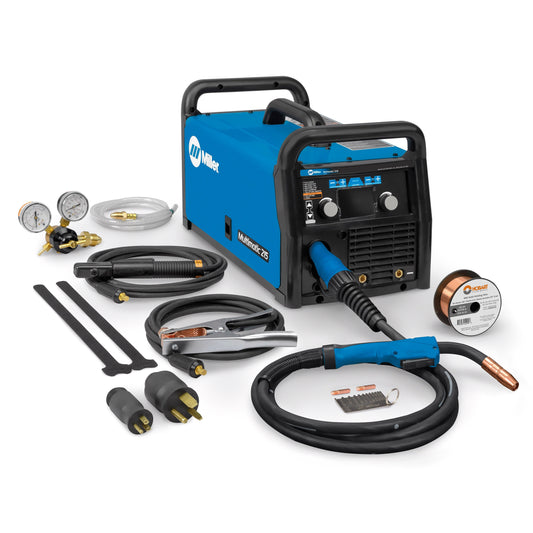Welding is a skill that combines art and science, requiring precision, practice, and the right equipment. However, even the most experienced welders can encounter problems that disrupt their workflow and compromise the quality of their welds. In this blog post, we'll delve into some common welding issues and provide expert tips on how to troubleshoot and resolve them. Plus, we'll recommend essential tools and accessories that can help you achieve flawless results.

Porosity in Welds
Problem: Porosity occurs when gas pockets or voids are trapped in the weld, leading to weak spots and potential failure.
Causes:
- Contaminants on the material surface
- Inadequate shielding gas coverage
- Incorrect welding parameters
Solutions:
- Cleanliness is Key: Ensure the welding surface is free from oil, rust, paint, and other contaminants. Use a wire brush or grinder to clean the area before welding.
- Check Shielding Gas: Verify that your shielding gas is flowing properly and at the correct rate. Inspect hoses and connections for leaks.
- Adjust parameters: Review your welding machine settings, including voltage, amperage, and travel speed, to ensure they are appropriate for the material process.
Recommended Product: The Miller Digital Infinity Welding Helmet provides excellent visibility and protection, allowing you to see your work clearly and avoid contaminants.
Cracking in Welds
Problem: Cracks in welds can compromise the integrity and strength of the joint, leading to potential failure under stress.
Causes:
- Rapid cooling of the weld
- High carbon content in the base metal
- Improper joint design or preparation
Solutions
- Control cooling: Preheat the material if necessary and use controlled cooling techniques, such as covering the weld with an insulating blanket.
- Choose the Right Filler Material: Select a filler material that matches the base metal's composition and properties.
- Proper Joint Preparation: Ensure joints are designed and prepared correctly to avoid excessive stress concentrations.
Recommended Product: The Black Stallion Split Leather Welding Blanket offers inherent fire resistance and natural insulation to help temperature control your weld.
Incomplete Fusion
Problem: Incomplete fusion occurs when the weld metal fails to fuse properly with the base metal or previous weld passes, resulting in weak joints.
Causes:
- Insufficient heat input
- Incorrect welding angle or technique
- Presence of contaminants
Solutions:
- Increase Heat Input: Adjust your welding parameters to provide adequate heat input for proper fusion.
- Proper Technique: Maintain the correct travel angle and speed, and use a weaving technique if necessary to ensure complete coverage.
- Clean the Surface: Remove any contaminants from the welding area to promote better fusion.
Recommended Product: The Miller Multimatic 215 Multiprocess Welder offers adjustable settings to help you achieve the perfect heat input for any project.
Excessive Spatter
Problem: Excessive spatter not only creates a mess but also affects the appearance and quality of the weld.
Causes:
- Incorrect welding parameters
- Poor shielding gas coverage
- Using the wrong filler material
Solutions:
- Adjust Parameters: Fine-tune your voltage, amperage, and wire feed speed to reduce spatter.
- Check Shielding Gas: Ensure your shielding gas is appropriate for welding process and is being delivered effectively.
- Chose the Right Filler: Use a filler material that matches the base metal and is suitable for the welding process.
Recommended Product: The Blue Demon Anti-Spatter Nozzle Gel is designed to protect both manual and automatic MIG gun nozzles and tips to help prevent welding spatter from sticking to your nozzles or contact tips and does not affect the weld.
Distortion and Warping
Problem: Distortion and warping occur when the welded material deforms due to uneven heating and cooling.
Causes:
- Excessive heat input
- Poor clamping and fixturing
- Improper welding sequence
Solutions:
- Control Heat Input: Use intermittent welding techniques and allow the material to cool between passes.
- Proper Clamping: Secure the material with clamps and fixtures to maintain alignment during welding.
- Welding Sequence: Plan your welding sequence to minimize hat buildup and distribute it evenly across the workpiece.
Recommended Product: The Strong Hand Tools Welding Clams and Fixtures are essential for keeping your workpiece in place and reducing distortion.
Welding problems can be frustrating, but with the right knowledge and tools, then can be effectively managed. By understanding the common issues and their causes, you can take proactive steps to ensure high-quality welds every time. At Baker's Gas and Welding, we offer a wide range of products to help you tackle any welding challenge. Visit us at www.bakersgas.com, call us at 877-930-5690, or email us at support@bakersgas.com if you need any additional help! Our team of experts is here and ready to assist you with your next welding project!
Happy Welding!




